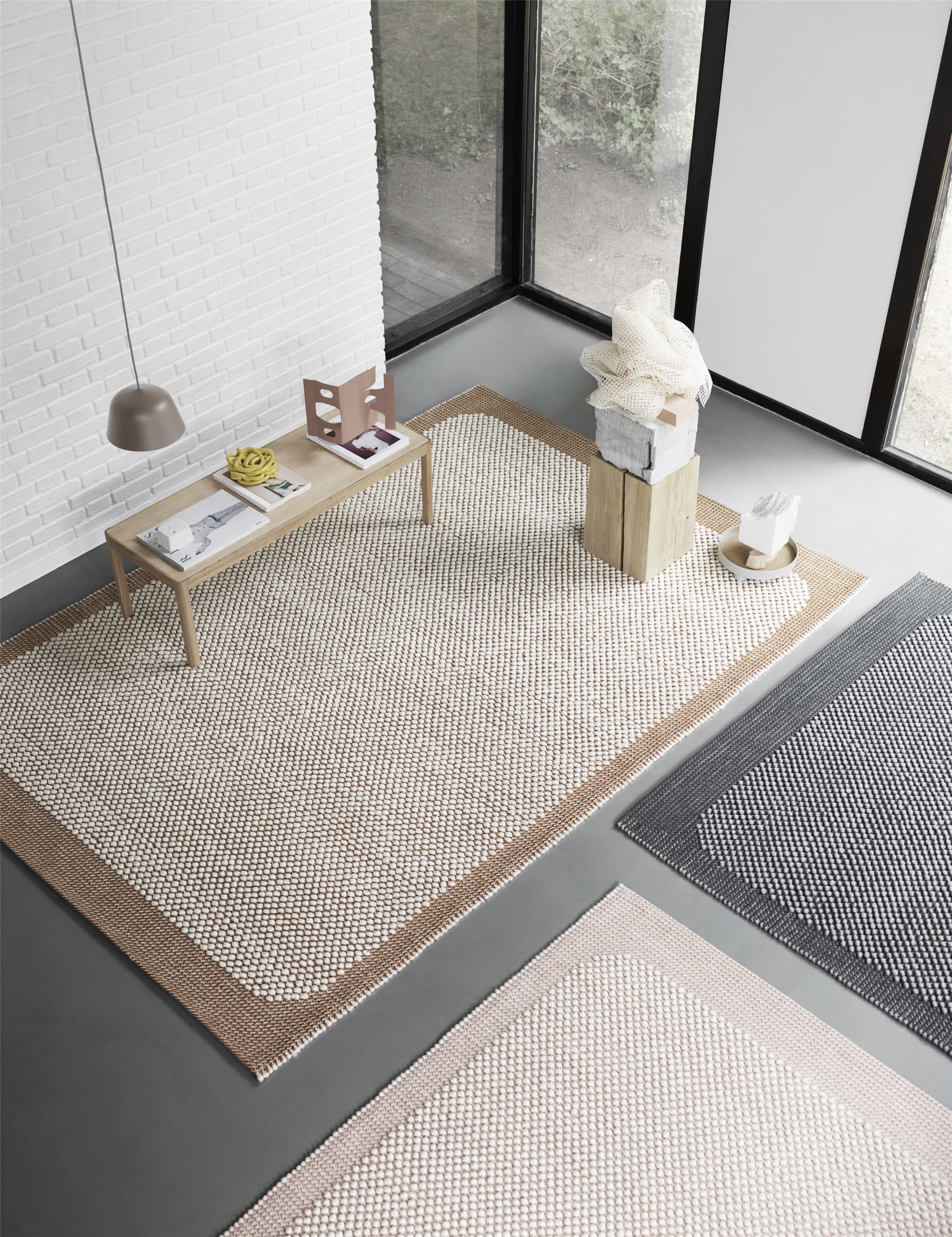
Rugs Buying Guide: Expert Tips for Finding the Perfect Rug
Are you on the hunt for the perfect rug to transform your living space? Look no further than our comprehensive “Rugs Buying Guide.” Selecting the ideal rug can be a transformative experience, elevating the aesthetics and comfort of your home. However, with the multitude of options available, navigating the rug market can be a daunting task.
That’s why we’ve crafted this expert rug-buying guide to provide you with valuable insights and tips that will simplify your rug-shopping journey. Whether you’re a seasoned decorator or a first-time buyer, our guide will help you make an informed choice and find the rug that truly fits your needs and style. Let’s embark on this exciting journey together, as we explore the art of choosing the perfect rug for your space.
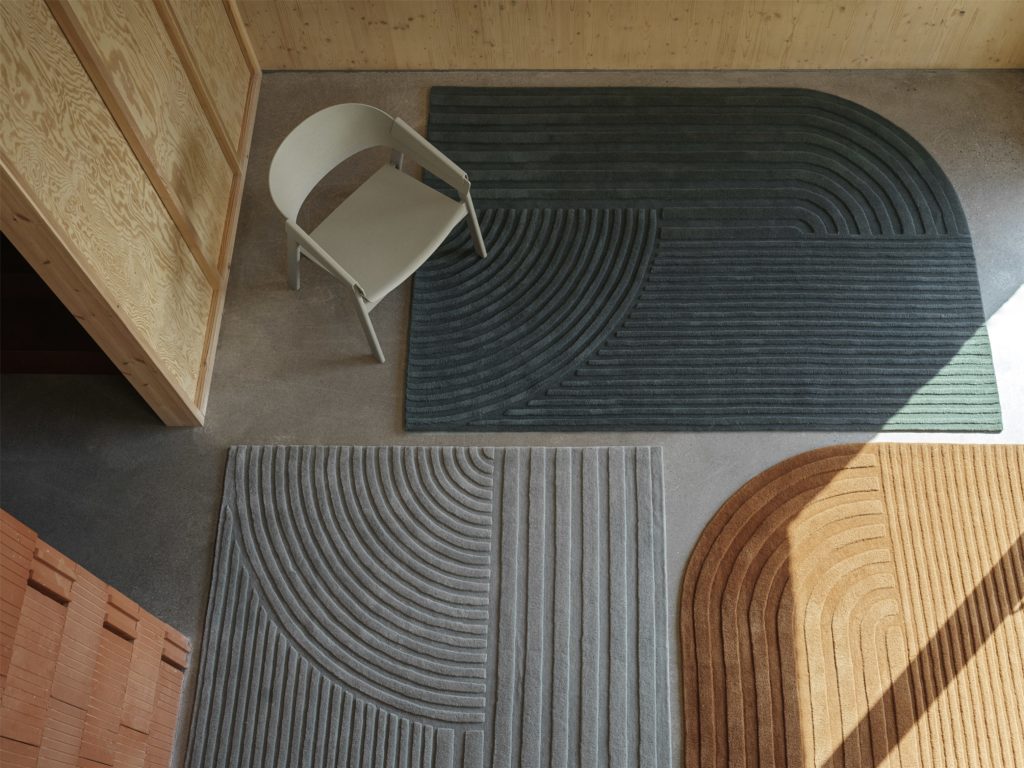
Understanding your needs when choosing rugs
Before diving into the world of rug shopping, it’s essential to gain a clear understanding of your specific needs and preferences. Taking the time to assess your requirements will not only simplify the buying process but also ensure that the rug you choose aligns perfectly with your home’s décor and your lifestyle. Here’s how to get started:
Room Purpose and Traffic:
- Begin by considering the purpose of the room where you plan to place the rug. Is it a high-traffic area like the living room or a more private space like the bedroom?
- High-traffic areas may require more durable and stain-resistant materials, while a bedroom rug can focus more on comfort and aesthetics.
Room Size and Layout:
- Measure the dimensions of the room and determine where you intend to place the rug. Understanding your room’s size will help you choose the appropriate rug size and shape.
- Consider the layout of your furniture as well. Do you want the rug to sit under the furniture or in front of it? The answer will impact the rug size you select.
Style and Aesthetics:
- Think about the existing décor and style of the room. Are you going for a traditional, modern rug, or eclectic look?
- The rug you choose should complement the room’s aesthetics, enhancing its overall appeal.
Colour Coordination:
- Pay attention to the colour scheme of your room. Consider whether you want the rug to be a bold focal point or a subtle accent.
- Coordinating rug colours with your existing furniture, wall colours, and accessories can create a harmonious look.
Family and Lifestyle:
- If you have pets or children, factor in their needs. Opt for rugs that are easy to clean and resistant to wear and tear.
- Consider any allergies or sensitivities within your household when choosing rug materials.
By delving into these aspects, you’ll gain a comprehensive understanding of your needs and preferences, setting the foundation for a successful rug-buying journey. Next, we’ll explore the various types of rugs available to help you make an informed choice based on your unique requirements.
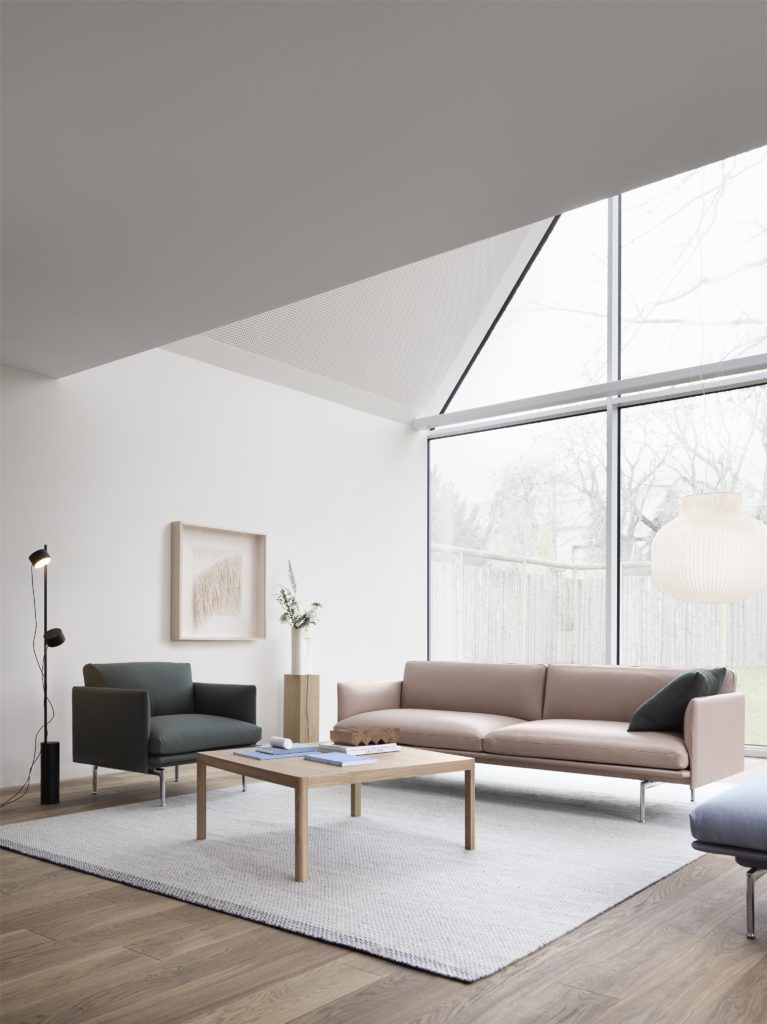
Ply Rug Off White by Margrethe Odgaard for Muuto
Types of Rugs – Tips for choosing the right type
Rugs come in a diverse array of styles and types, each with its own unique characteristics and best-use cases. Understanding the different types of rugs available in the market is a crucial step in finding the ideal rug for your home. Let’s explore some of the most common rug types and their distinct features:
Area Rugs:
- Characteristics: Area rugs are versatile, large rugs that can cover a significant portion of a room’s floor.
- Best Use Cases: They work well in living rooms, dining rooms, and bedrooms, serving as the focal point of the room or defining specific areas within an open floor plan.
Runners:
- Characteristics: Rug Runners are long, narrow rugs typically used in hallways, entryways, or along the sides of a bed.
- Best Use Cases: They add a touch of style and comfort to high-traffic areas, protect flooring, and create visual interest in narrow spaces.
Persian Rugs:
- Characteristics: Persian rugs are known for their intricate designs, vibrant colours, and fine craftsmanship. They often feature traditional patterns and motifs.
- Best Use Cases: These rugs are prized for their artistic value and are ideal for adding elegance to formal living rooms and dining areas.
Shag Rugs:
- Characteristics: Shag rugs are characterized by their long, fluffy pile, creating a soft and cozy feel underfoot.
- Best Use Cases: They are perfect for bedrooms, children’s playrooms, or any space where comfort and warmth are a priority.
Kilim Rugs:
- Characteristics: Kilim rugs are flat-woven with geometric patterns and bold colours, often originating from regions like Turkey and the Middle East.
- Best Use Cases: Kilims can bring a touch of cultural charm to both modern and traditional interiors, making them versatile choices.
Outdoor Rugs:
- Characteristics: Outdoor rugs are designed to withstand outdoor conditions, with materials that resist moisture and fading.
- Best Use Cases: Ideal for patios, decks, and outdoor seating areas, they extend your living space to the great outdoors.
Oriental Rugs:
- Characteristics: Oriental rugs encompass a wide range of styles and patterns, often handmade with intricate detailing.
- Best Use Cases: These rugs can elevate the ambience of formal dining rooms, libraries, and offices.
Understanding the characteristics and best-use cases of these rug types will help you narrow down your choices based on your specific needs and style preferences. As we delve deeper into the rug-buying process, you’ll be better equipped to select the perfect rug for your space.
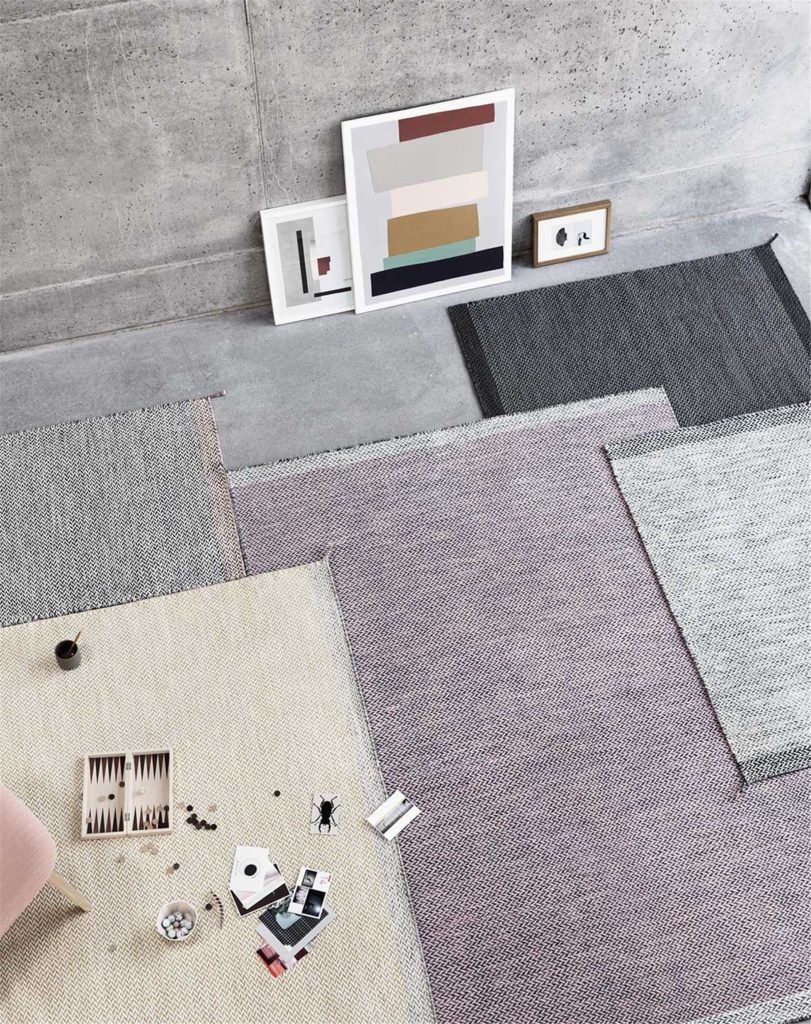
Ply Rug Rose by Margrethe Odgaard for Muuto
Rug Materials – How to make the right choice
The material of your rug plays a significant role in its durability, comfort, and overall performance. With various rug materials available, each has its own set of advantages and considerations. Let’s explore different rug materials, their pros and cons, and how to choose the right one based on your lifestyle and preferences:
Wool rugs:
- Pros: Wool is a natural fibre known for its softness, durability, and excellent insulating properties. It’s naturally resistant to stains and moisture to some extent.
- Cons: Wool rugs can be more expensive, and they may require more maintenance to keep them looking their best. They can also be susceptible to moth damage if not properly cared for.
- Ideal for: High-traffic areas and rooms where comfort and warmth are essential, such as living rooms and bedrooms.
Synthetic Fiber rugs (e.g., Nylon, Polyester, Polypropylene):
- Pros: Synthetic rugs are often more budget-friendly and resistant to stains and fading. They’re also relatively easy to clean and maintain.
- Cons: They may not have the same natural feel as wool or other fibres, and their lifespan may be shorter.
- Ideal for: Areas with heavy foot traffic, kids’ playrooms, or outdoor spaces.
Natural Fiber rugs (e.g., Jute, Sisal, Seagrass):
- Pros: Natural fibre rugs have a unique texture and provide a rustic, earthy feel to a room. They are eco-friendly and biodegradable.
- Cons: They can be less soft underfoot compared to wool or synthetic rugs, and they may not be as stain-resistant.
- Ideal for: Adding a natural and organic touch to spaces like dining rooms, entryways, and sunrooms.
Silk rugs:
- Pros: Silk rugs have a luxurious sheen and a soft, fine texture. They often feature intricate designs and colours.
- Cons: Silk rugs are delicate and best suited for low-traffic areas. They can be quite expensive and may require professional cleaning.
- Ideal for: Formal and elegant spaces where the rug serves as a centerpiece.
Blend or Mixed Material rugs:
- Pros: Some rugs combine different materials to achieve a balance of durability, softness, and style.
- Cons: The pros and cons can vary depending on the specific materials used in the blend.
- Ideal for: Customizing rugs to meet specific needs, such as blending wool and synthetic fibres for a durable yet soft rug.
Choosing the right rug material depends on your lifestyle, budget, and the specific requirements of the room.
Consider factors such as foot traffic, ease of maintenance, and the desired look and feel when making your selection. With a clear understanding of rug materials, you can make an informed choice that enhances both the aesthetics and functionality of your living spaces.
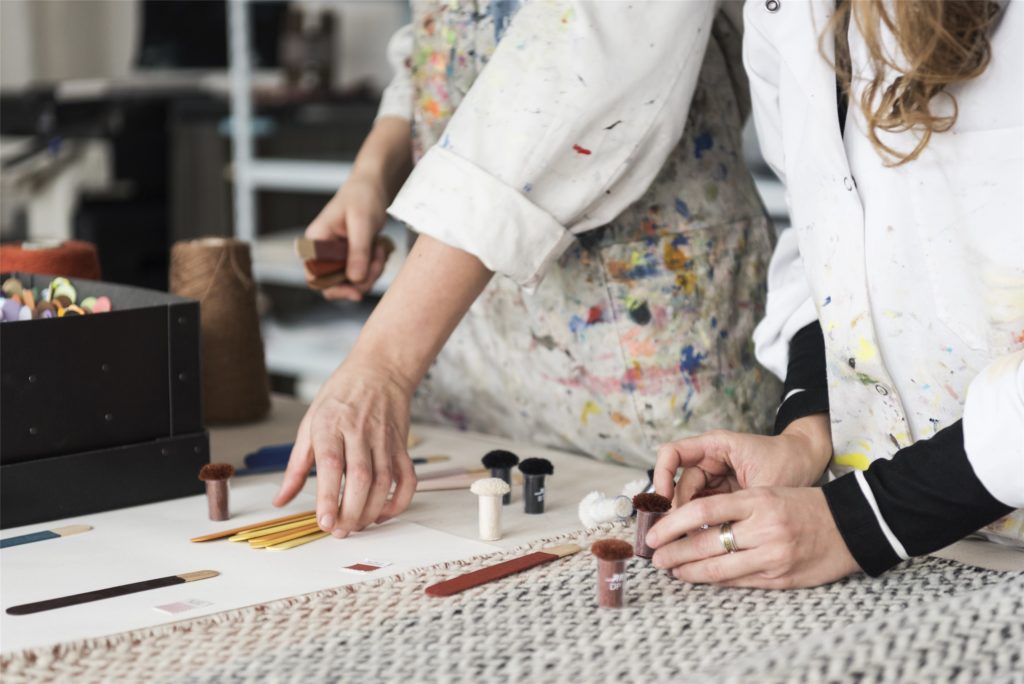
Rug Styles and Designs
The style and design of a rug can make a significant impact on the overall aesthetics of a room. Whether you’re aiming for a classic, modern, or eclectic look, choosing the right rug style and pattern is key. In this section, we’ll explore popular rug styles and patterns, and provide insights on how to match them with your existing decor:
Traditional Rugs:
- Styles: Traditional rugs often feature intricate patterns, ornate borders, and classic motifs inspired by various cultures and regions.
- Matching with Decor: Traditional rugs can add elegance and timeless charm to formal living rooms, dining areas, and traditional home settings.
Modern and Contemporary Rugs:
- Styles: These rugs embrace simplicity, minimalism, and bold, abstract designs. They may use vibrant colours or monochromatic palettes.
- Matching with Decor: Modern rugs complement contemporary interiors, minimalist spaces, and rooms with sleek furniture and clean lines.
Geometric Rugs:
- Styles: Geometric rugs feature repetitive geometric patterns, such as stripes, chevrons, and hexagons, creating a visually engaging look.
- Matching with Decor: They work well in modern and transitional spaces, adding a sense of order and structure.
Floral Rugs:
- Styles: Floral rugs showcase intricate or stylized flower and plant motifs, offering a touch of nature indoors.
- Matching with Decor: Floral rugs can bring vibrancy and a touch of romance to bedrooms, living rooms, and cozy reading nooks.
Bohemian or Boho Chic Rugs:
- Styles: Boho rugs are known for their eclectic mix of colours, patterns, and textures. They often have a free-spirited, artistic vibe.
- Matching with Decor: They are perfect for creating a laid-back, eclectic, and vibrant atmosphere in living spaces, bedrooms, and even outdoor areas.
Transitional Rugs:
- Styles: Transitional rugs combine elements of traditional and contemporary designs, offering versatility and a timeless appeal.
- Matching with Decor: These rugs are suitable for spaces that aim for a balanced and harmonious blend of classic and modern elements.
Nautical or Coastal Rugs:
- Styles: Coastal rugs often feature maritime themes, seashells, sailboats, or beach-inspired colours like blues and whites.
- Matching with Decor: Perfect for beachfront homes, beach-themed rooms, or any space aiming for a coastal vibe.
When selecting a rug style and design, consider the existing decor, colour palette, and overall theme of the room.
A well-chosen rug can tie the entire space together, adding character and personality to your home. Whether you prefer a traditional elegance or a modern flair, there’s a rug style and pattern to suit your taste and enhance your interior design.
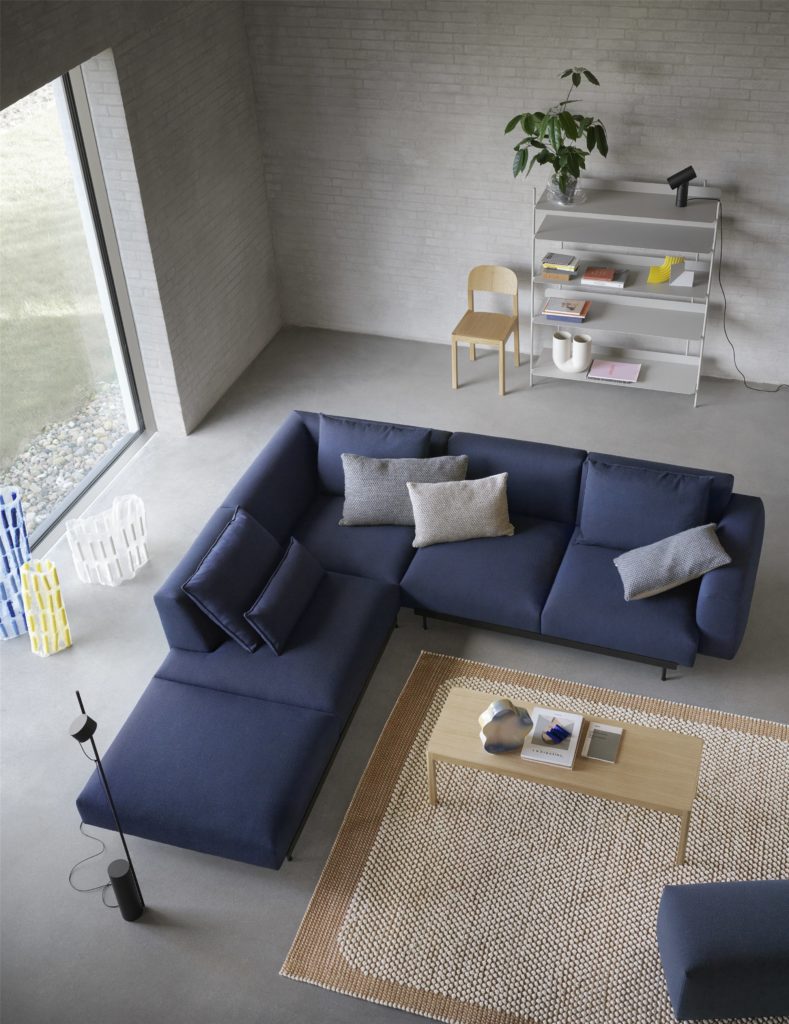
Pebble Rug Burnt Orange by Margrethe Odgaard for Muuto
Choosing rug colours and colour schemes
The colour of a rug is a fundamental aspect of its design and can significantly influence the overall aesthetics of a room. Whether you want to create a harmonious ambience or make a bold statement, understanding how rug colours impact your space is crucial. In this section, we’ll delve into the importance of rug colours and provide tips on selecting colours that complement your decor:
The Importance of Rug Colors:
- Affect on Atmosphere: Rug colours play a key role in setting the mood of a room. Lighter colours can create an open and airy feel, while darker hues add warmth and coziness.
- Visual Impact: The rug often serves as a focal point. Vibrant or contrasting colours can draw attention, while neutral colours blend seamlessly into the background.
Tips for Selecting Rug Colors:
- Consider Existing Decor: Start by examining your current furnishings, wall colours, and decor items. The rug should complement and enhance these elements.
- Create Balance: If your room has bold or vibrant furniture, consider a more subdued rug colour to balance the overall look. Conversely, neutral furniture can be paired with a rug that adds a pop of colour.
- Room Size: In smaller rooms, lighter-coloured rugs can create a sense of spaciousness, while in larger rooms, darker rugs can define cozier areas within the space.
- Colour Temperature: Pay attention to the colour temperature (warm or cool) of the room and choose rug colours that harmonize with it. For example, warm colours like reds and yellows can create a cozy atmosphere, while cool colours like blues and greys lend a calming effect.
- Pattern Consideration: If you’re selecting a patterned rug, look for one that incorporates colours from your existing decor. This ensures cohesion and ties the room together.
Sample and Visualize:
- When in doubt, bring home rug samples or use online visualization tools to see how different rug colours will look in your space. This helps you make a more informed decision.
Accent Colors:
- For a touch of personality and contrast, consider using your rug to introduce accent colours that aren’t prominent in the rest of your decor. This can create visual interest.
Remember that rug colours are not isolated choices; they interact with other elements in your room.
By carefully selecting rug colours that harmonize with your decor and desired atmosphere, you can transform your space into a cohesive and visually appealing environment. Whether you opt for subtle neutrals, vibrant hues, or something in between, the right rug colour can make a remarkable difference in your interior design.
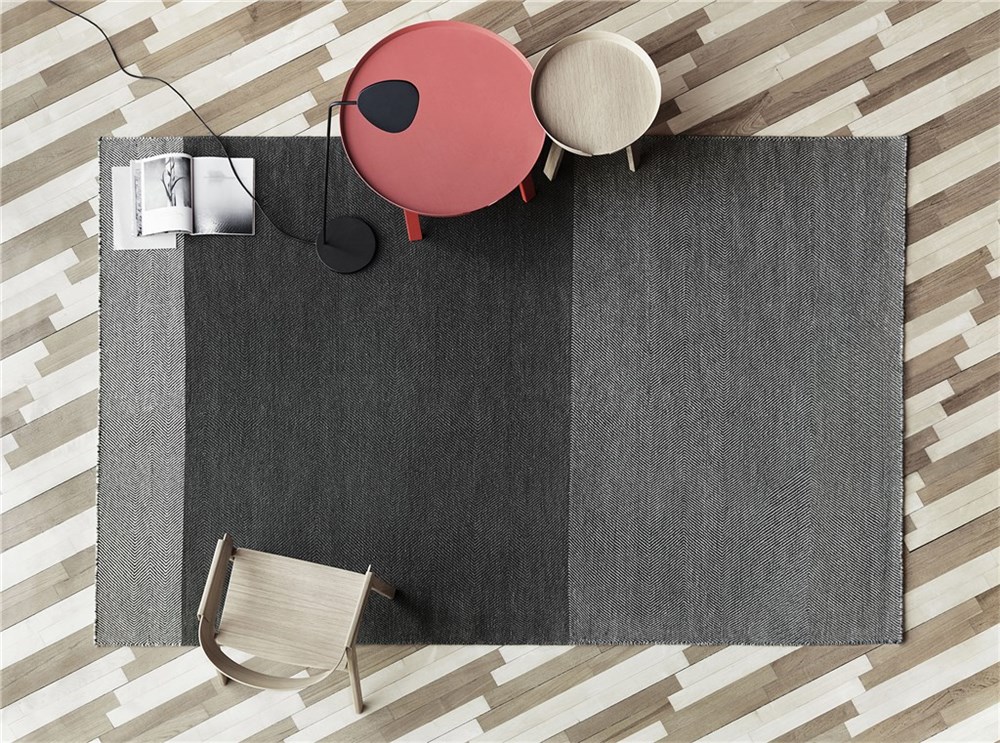
Varjo Rug Dark Grey by Tina Ratzer for Muuto
Size Matters – Choosing the rug sized rug for your space
Choosing the right rug size is crucial for achieving the perfect balance and functionality in your space. A rug that’s too small can look out of place, while one that’s too large can overwhelm the room. In this section, we’ll guide you on determining the right rug size for different rooms and areas, and we’ll provide a practical size chart for reference:
Living Room:
- Front Legs or Entire Furniture: In the living room, you have two primary options. You can choose a rug that accommodates only the front legs of your seating furniture, creating a cohesive grouping. Alternatively, you can opt for a larger rug that fits under all the furniture, anchoring the entire seating area.
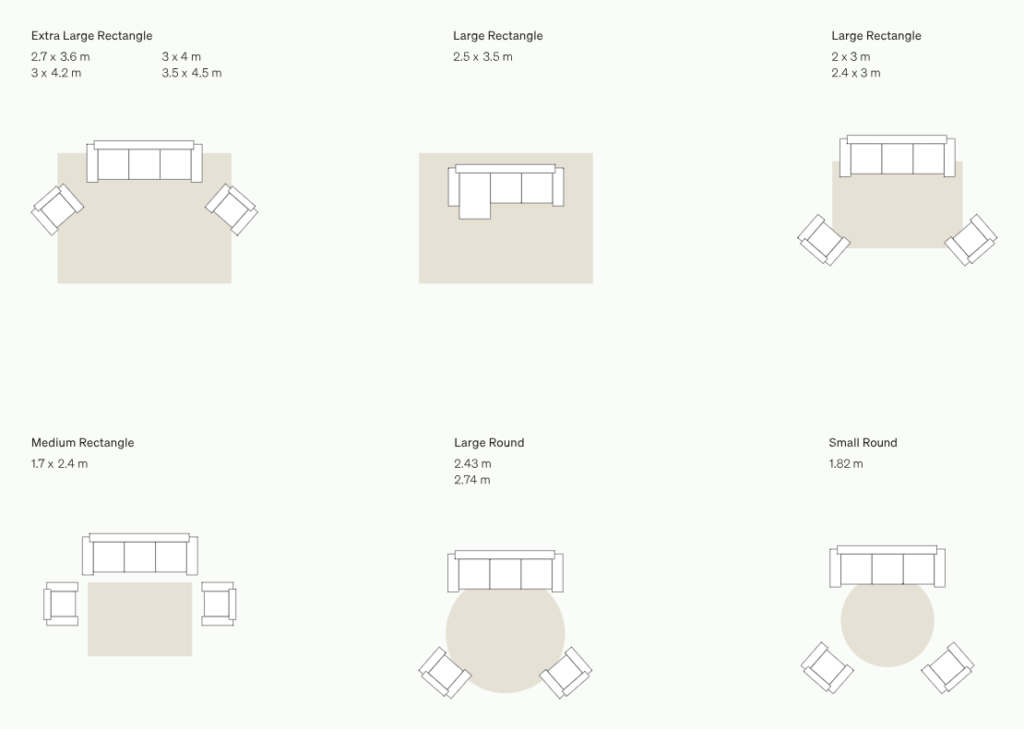
Source: Armadillo
Dining Room Rug Placement:
- Table and Chairs: For the dining room, the rug should extend beyond the edges of the dining table. This ensures that chairs remain on the rug even when pulled out, making it easier to sit and stand.
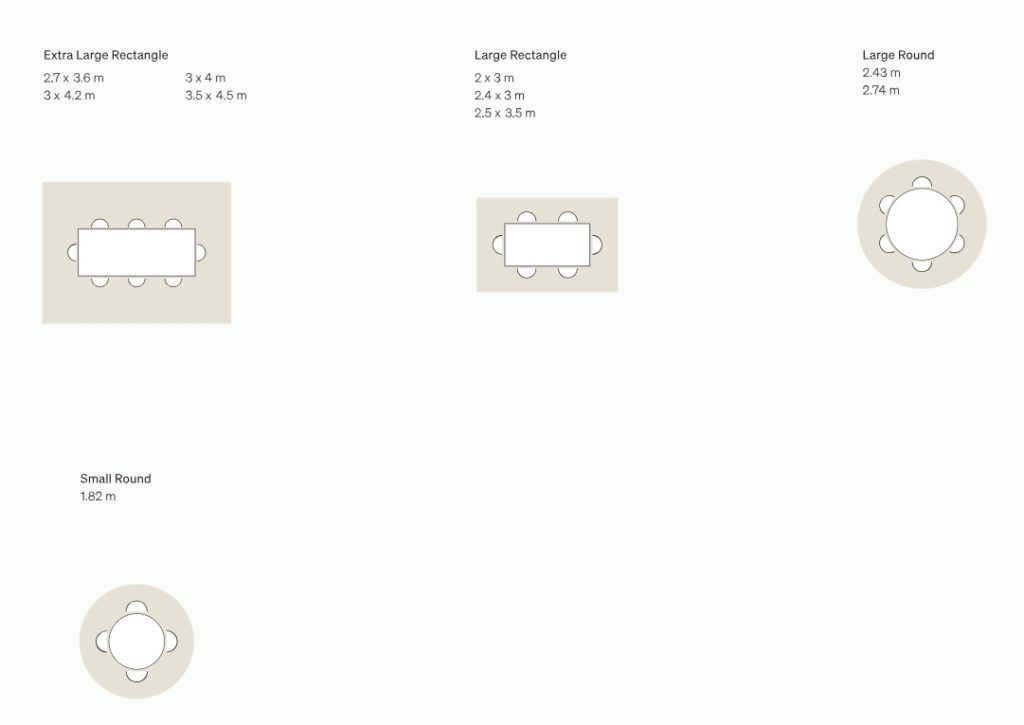
Source: Armadillo
Bedroom Rug Placement:
- Under the Bed: In the bedroom, consider placing the rug under the bed, extending it so that it peeks out on all sides. This adds warmth and comfort when stepping in and out of bed.
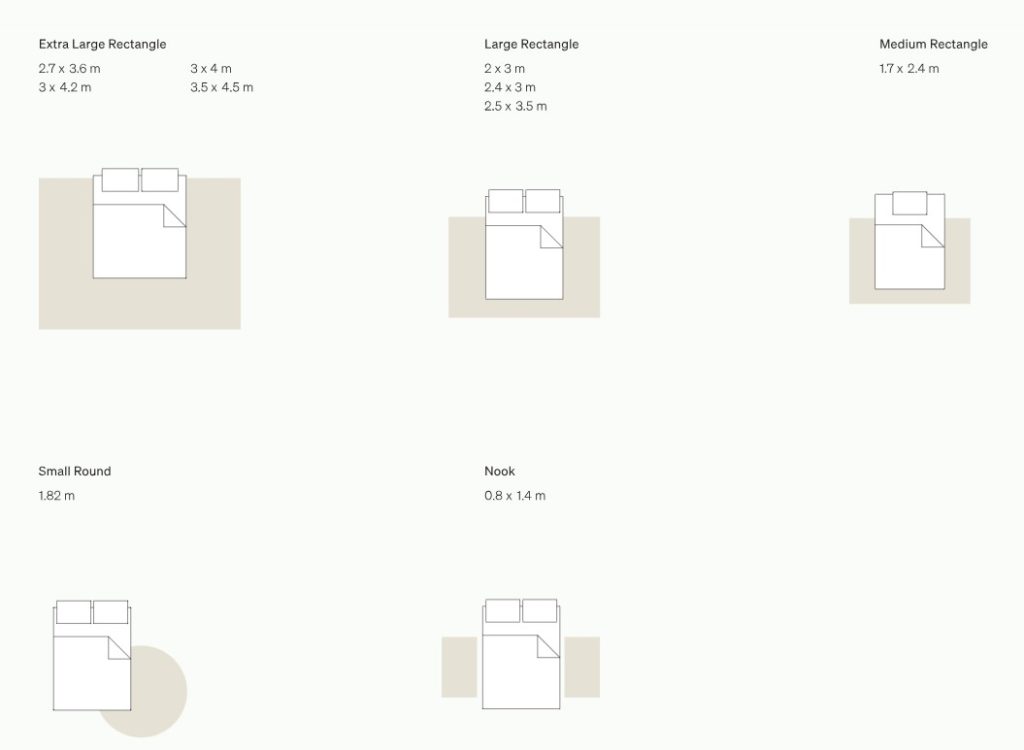
Source: Armadillo
Hallways and Entryway Rug Placement:
- Runner or Foyer Rug: For hallways and entryways, runners or appropriately sized foyer rugs can add style and protect your flooring. Measure the available space and choose a rug that fits comfortably.
Outdoor Spaces:
- Size of the Seating Area: In outdoor areas, select a rug that matches the size of your outdoor seating area. This creates a defined space for relaxation and entertainment.
Practical Size Chart for Reference (in meters):
Here’s a handy size chart to help you determine the ideal rug dimensions for common room types:
- Living Room:
- Front Legs: Approximately 1.52m x 2.44m or 1.83m x 2.74m
- Entire Furniture: Approximately 2.44m x 3.05m or 2.74m x 3.66m
- Dining Room:
- Under Dining Table: At least 2.44m x 3.05m or larger, depending on the table size and room dimensions.
- Bedroom:
- Under Queen Bed: Approximately 2.44m x 3.05m or 2.74m x 3.66m
- Under King Bed: Approximately 2.74m x 3.66m or larger
- Hallways and Entryways:
- Runners: Typically 0.76m x 2.44m or custom sizes as needed.
- Foyer Rugs: Measure the available space and choose a rug size that fits comfortably.
- Outdoor Spaces:
- Size depends on the dimensions of your outdoor seating area. Common sizes include approximately 1.52m x 2.13m, 2.44m x 3.05m, and larger.
Keep in mind that these are general guidelines, and your specific room layout and preferences may require adjustments. Always measure your space and furniture to ensure the rug you choose fits perfectly. A well-sized rug not only enhances the aesthetics of your room but also provides comfort and functionality.
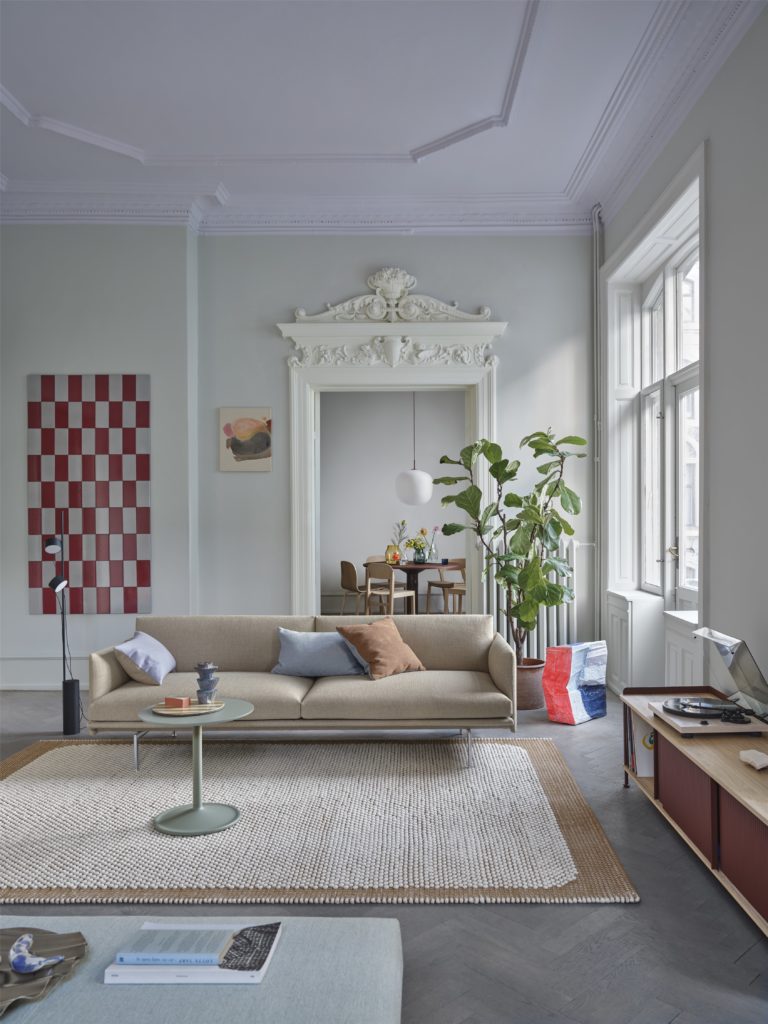
Pebble Rug Burnt Orange by Margrethe Odgaard for Muuto
Choosing the Right Rug by Room
Selecting the perfect rug isn’t a one-size-fits-all endeavour. The ideal rug for your living room might not be suitable for your bedroom, and the needs of your outdoor area differ from those of your kitchen. Let’s delve into rug selection considerations for various rooms in your home, providing specific advice and tips for each room type:
Living Room:
- Considerations: The living room is often a central gathering place, so the rug should be large enough to accommodate all furniture or at least the front legs.
- Advice: Opt for a rug that extends beyond the coffee table and under the front legs of sofas and chairs. This anchors the seating area and creates a cozy atmosphere.
Bedroom:
- Considerations: In the bedroom, the rug should extend beyond the sides and foot of the bed, offering a soft landing for your feet.
- Advice: Choose a rug that is large enough to fit under the entire bed and extend several feet beyond the sides and feet for a plush, luxurious feel when getting out of bed.
Dining Room:
- Considerations: The dining room rug should accommodate the dining table and chairs, even when chairs are pulled out.
- Advice: Measure your dining table and add at least 60-75 centimetres to each side. This ensures that chairs remain on the rug when pulled out for comfortable seating.
Kitchen:
- Considerations: Kitchen rugs should be durable and easy to clean since they’re prone to spills and high foot traffic.
- Advice: Look for low-pile or flat-weave rugs that are easy to clean. Non-slip rug pads can help keep them in place.
Entryway:
- Considerations: Entryway rugs should be functional, trapping dirt and moisture from shoes.
- Advice: Opt for a durable, easy-to-clean rug with a non-slip backing. Consider the shape and size that fits your entryway layout.
Outdoor Areas:
- Considerations: Outdoor rugs should be weather-resistant and able to withstand outdoor conditions.
- Advice: Look for rugs made from materials like polypropylene or synthetic fibres that are designed for outdoor use. Ensure proper ventilation to prevent mould or mildew.
Remember to factor in your specific room layout, furniture arrangement, and personal style preferences when choosing rugs for different areas of your home. The right rug not only enhances the aesthetics of the room but also provides comfort, warmth, and functionality tailored to each space’s unique needs.
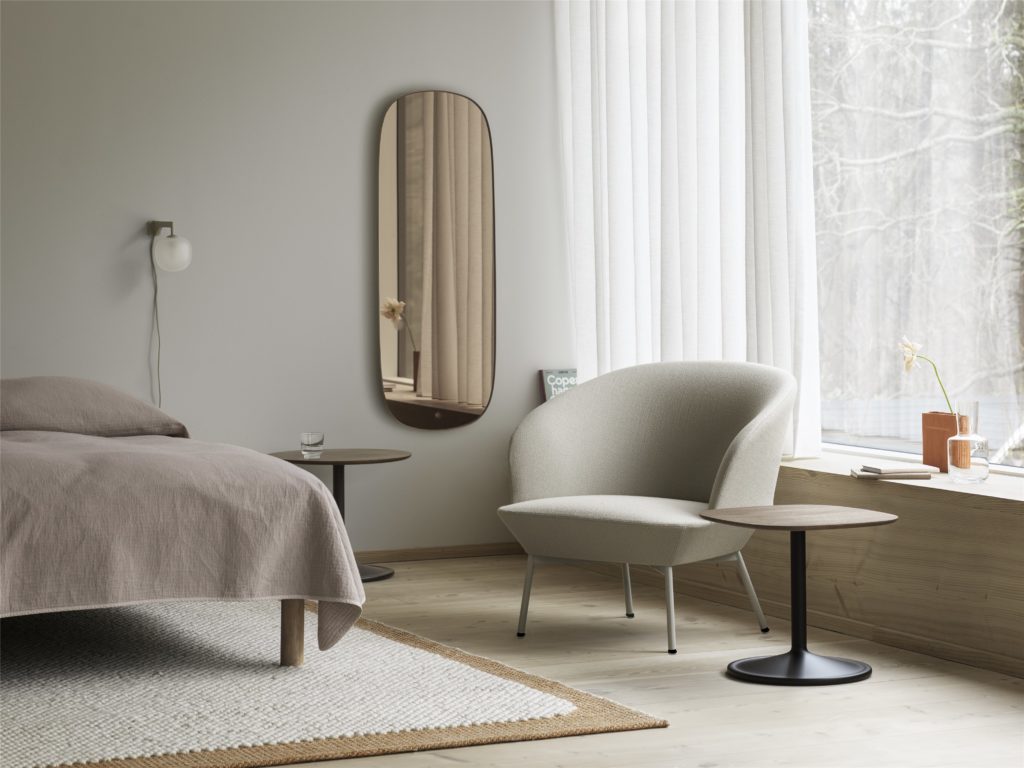
Budget considerations when buying a rug
Shopping for rugs can be an exciting endeavour, but it’s essential to establish a budget to guide your purchasing decisions. Rugs come in a wide price range, and with a thoughtful approach, you can find quality rugs that fit within your financial constraints. In this section, we’ll discuss budgeting for rugs and share tips on finding affordable options:
Set Your Rug Budget:
- Determine how much you’re willing to spend on a rug. Your budget will serve as a helpful guideline when you start exploring options.
Consider Rug Material:
- Keep in mind that rug prices often vary based on the material. Natural fibres like wool tend to be more expensive, while synthetic materials are often more budget-friendly.
Consider Custom or Made-to-Order Rugs:
- Sometimes, custom or made-to-order rugs can be surprisingly cost-effective, especially if you have specific size or design requirements.
Layer Rugs for Affordability:
- Layering smaller, more affordable rugs over larger, neutral ones can create a unique and budget-friendly look.
Don’t Compromise on Quality:
- While budget considerations are important, it’s essential to prioritize quality. A well-made rug will last longer and provide better value in the long run.
Rug Maintenance Savings:
- Invest in rug pads to extend the life of your rugs and reduce wear and tear. Proper care and maintenance can also save you money in the long term.
Remember that finding an affordable rug doesn’t mean sacrificing style or quality.
By carefully budgeting and exploring various purchasing options, you can discover rugs that enhance your space without breaking the bank. Keep an open mind and be patient in your search to find the perfect rug that meets both your aesthetic and budgetary requirements.
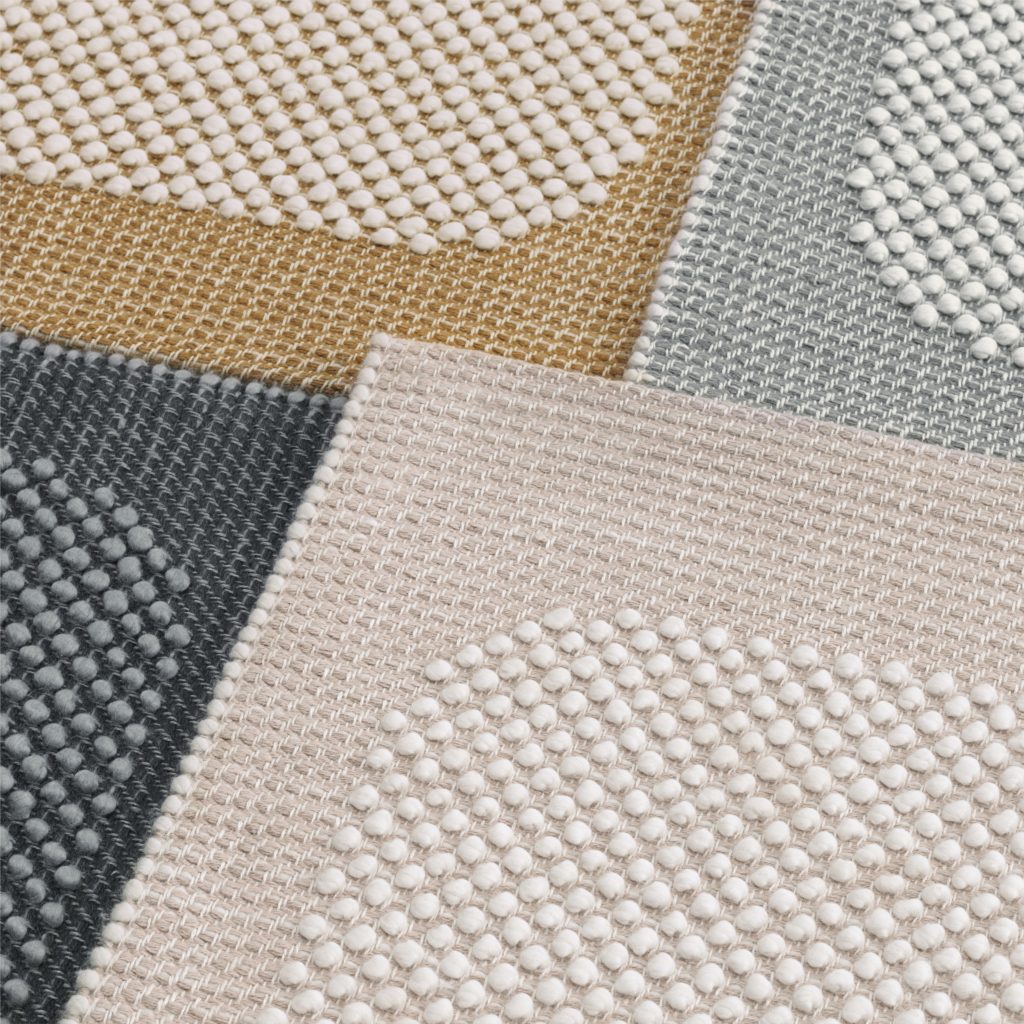
Maintenance and Care for your rug
Once you’ve found the ideal rug for your space, it’s essential to maintain and care for it to ensure it remains beautiful and functional for years to come. Proper rug care not only prolongs its lifespan but also retains its original charm. In this section, we’ll explore how to care for and clean rugs and offer maintenance tips tailored to different rug materials:
Regular Vacuuming:
- Vacuum your rug regularly to remove dust, dirt, and debris. Use a vacuum cleaner with adjustable settings to avoid damaging the rug’s fibres.
Rotate Your Rug:
- To even out wear and fading, rotate your rug 180 degrees every six months, especially in high-traffic areas.
Use Rug Pads:
- Place rug pads under your rugs to prevent slipping and sliding. Rug pads also provide additional cushioning and protect your flooring.
Shake Out Dirt and Debris:
- For smaller rugs and runners, take them outdoors and shake them to remove embedded dirt and debris.
Blot Stains Immediately:
- In the event of spills or stains, blot the affected area with a clean, dry cloth or paper towel. Avoid rubbing, as it can spread the stain.
Spot Cleaning:
- For specific stains, use a mild detergent mixed with water to gently blot the stain. Always test a small, inconspicuous area first to ensure colourfastness.
Professional Cleaning:
- Consider professional rug cleaning every 12 to 18 months, especially for high-quality or delicate rugs. Professional cleaning removes deep-seated dirt and stains.
Maintenance Tips Based on Rug Materials:
Wool Rugs:
- Wool rugs are durable but may shed initially. Regular vacuuming helps reduce shedding. Avoid excessive moisture to prevent mould growth.
Synthetic Rugs (Nylon, Polyester, Polypropylene):
- Synthetic rugs are typically easy to clean and maintain. They resist stains and fading but may not have the same longevity as natural fibre rugs.
Natural Fiber Rugs (Jute, Sisal, Seagrass):
- Avoid excessive moisture, as natural fibre rugs are prone to water damage. Blot spills promptly to prevent stains.
Silk Rugs:
- Silk rugs are delicate and should be handled with care. Professional cleaning is recommended to maintain their lustre.
Outdoor Rugs:
- Outdoor rugs are designed to withstand the elements but benefit from regular hosting and drying in the sun to prevent mould.
Oriental and Persian Rugs:
- These intricate rugs may require special care. Be cautious with DIY cleaning, and consider professional cleaning for preservation.
By following these maintenance and care tips, you can enjoy your rug’s beauty and comfort for years to come. Remember that different rug materials have specific care requirements, so always consider the unique needs of your rug when implementing maintenance routines.
Rug Placement and Arrangement Guide
Proper rug placement and arrangement are essential elements in interior design that can enhance the overall aesthetics and functionality of a room. Whether you want to create a cozy atmosphere, define specific areas, or add a touch of style, understanding how and where to place rugs is key. In this section, we’ll provide guidance on rug placement for maximum impact and offer ideas for rug arrangement in various rooms:
Living Room:
- Rug Under Furniture: In the living room, place the rug under the front legs of sofas and chairs to anchor the seating area. Ensure the rug is large enough to accommodate the entire coffee table and maintain proportion.
Dining Room:
- Full Table Coverage: In the dining room, choose a rug that extends beyond the dining table and chairs, even when chairs are pulled out. This ensures that chairs remain on the rug when seated.
Bedroom:
- Under the Bed: In the bedroom, position the rug under the bed, allowing it to extend several feet beyond the sides and feet for a soft and comfortable surface when getting in and out of bed.
Hallways and Entryways:
- Runner Rugs: Hallways and entryways benefit from runner rugs that add style and protect your flooring. Runners should be centred in the hallway or aligned with the entryway layout.
Outdoor Areas:
- Seating Zone: In outdoor spaces, place a rug under the seating area to define the zone and create a cozy atmosphere. Ensure the rug is appropriately sized for the outdoor furniture arrangement.
Layering Rugs:
- Creative Options: Consider layering rugs for added visual interest. You can layer a smaller, more vibrant rug on top of a larger, neutral one to create a unique look.
Wall-to-Wall Rugs:
- Contemporary Aesthetics: In some modern interior designs, wall-to-wall rugs are used to create a seamless and visually appealing look. This approach is particularly popular in minimalist and contemporary spaces.
Accent and Focal Point:
- Centrepiece Rugs: In any room, a rug can serve as the focal point or accent piece. Choose a rug with a vibrant colour or bold pattern to draw attention and add character.
Layering Over Carpet:
- Elevating Carpeted Spaces: In homes with wall-to-wall carpeting, layering a decorative area rug can elevate the room’s style and add texture.
Symmetry and Balance: – Furniture Arrangement: Ensure that the placement of your rug complements the overall furniture arrangement, maintaining symmetry and balance in the room.
Remember that rug placement should not only be visually appealing but also functional. It should align with your room’s purpose and the traffic flow within the space. Experiment with different arrangements and don’t be afraid to get creative to achieve the desired impact. Properly placed rugs can transform a room, adding warmth, style, and comfort.
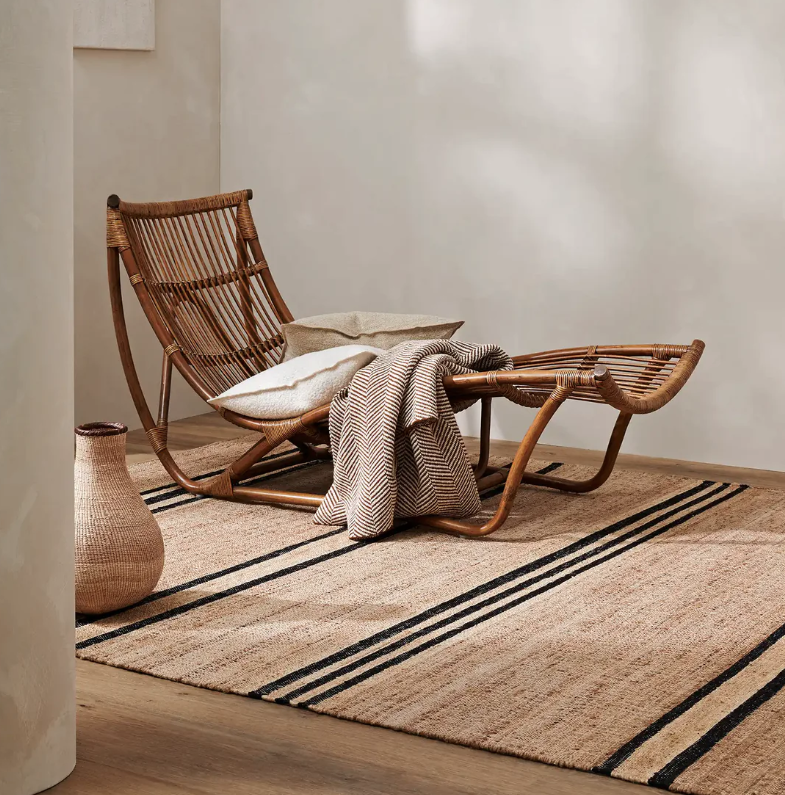
In your quest to find the perfect rug, you’ve explored a world of possibilities, from rug materials and styles to sizes and budget considerations.
Armed with expert tips and insights, you’re well-prepared to make a rug purchase that elevates the beauty and functionality of your living spaces. Here are the key takeaways from our rug-buying guide:
- Understanding Your Needs: Start by assessing your lifestyle, room requirements, and design preferences. Knowing what you need will help you make an informed choice.
- Types of Rugs: Familiarize yourself with various rug types, their characteristics, and best use cases. This knowledge empowers you to select the right rug for each room.
- Rug Materials: Consider the pros and cons of different rug materials to match your lifestyle and preferences. Whether it’s wool, synthetic fibres, natural materials, or silk, there’s a material that suits your needs.
- Rug Styles and Designs: Explore a range of rug styles and patterns, from traditional to modern, and learn how to harmonize them with your existing decor.
- Colours and Color Schemes: Understand the importance of rug colours and how they influence the overall room aesthetics. Choose colours that complement your space and create the desired atmosphere.
- Size Matters: Determine the right rug size for various rooms and areas. A well-sized rug enhances the room’s layout and functionality.
- Choosing the Right Rug by Room: Tailor your rug selection to each room’s specific requirements, considering factors like furniture placement, traffic flow, and ambience.
- Budget Considerations: Set a budget and explore affordable rug options without compromising on quality or style.
- Maintenance and Care: Implement regular cleaning and maintenance routines to prolong your rug’s lifespan and keep it looking its best.
- Rug Placement and Arrangement: Maximize the impact of your rug by placing it in the right location and arranging it to complement the room’s layout and purpose.
Commonly Asked Questions
Yes, a rug can be too big for a room, making it feel cramped. It’s essential to strike a balance between the rug’s size and the room’s dimensions to maintain visual harmony.
Yes, a rug can be too small for a living room, making the space feel disconnected and incomplete. It’s generally better to choose a rug that accommodates all the main furniture pieces.
Choosing the perfect rug for your space involves considering factors like room size, furniture layout, and your personal style. Start by measuring your room and deciding whether you want a rug that covers the entire area or just part of it. Also, think about the color and pattern that complements your decor.
To choose the right rug color, consider the existing colors in your living room’s decor. You can either select a rug that complements these colors or choose one with a contrasting color to make a bold statement.
To clean a rug at home, first, vacuum it to remove loose dirt. Then, mix a solution of water and mild detergent. Gently scrub the rug with a soft brush or cloth, moving in the direction of the fibers. Rinse with clean water and blot dry with towels, ensuring it’s completely dry to prevent mold.
